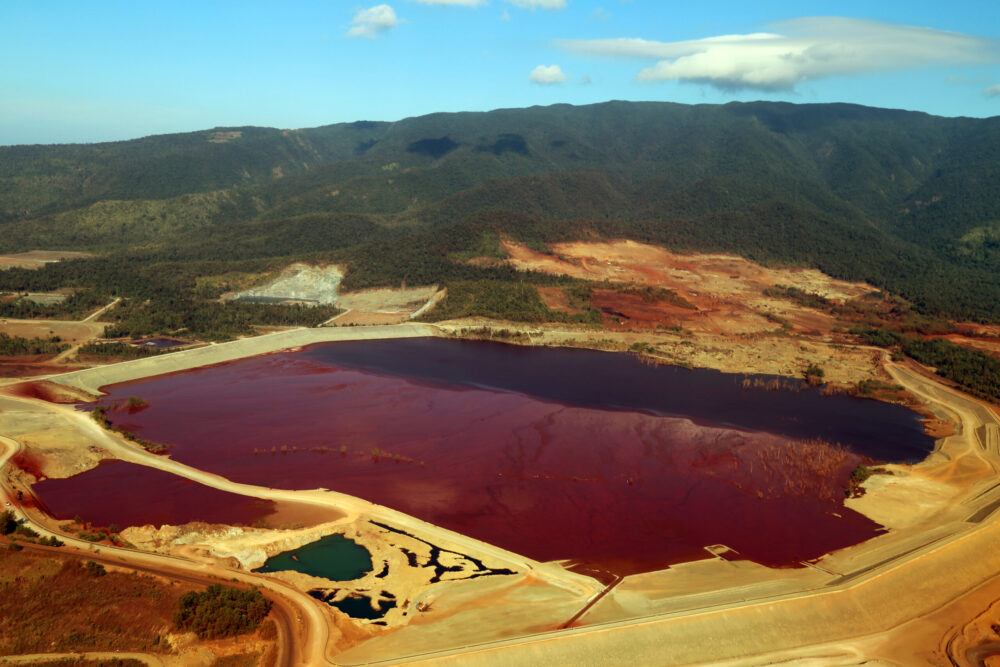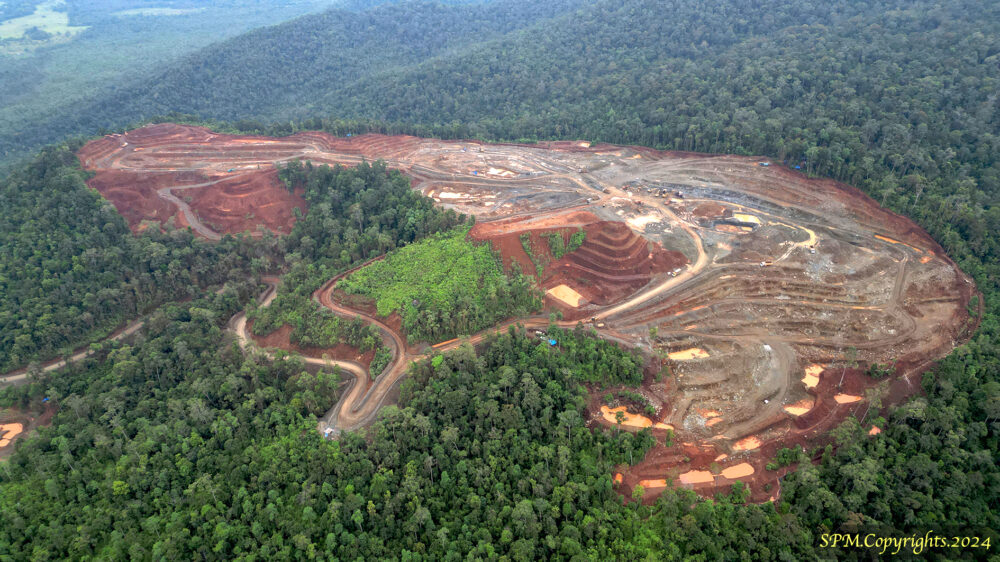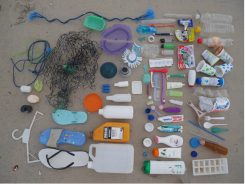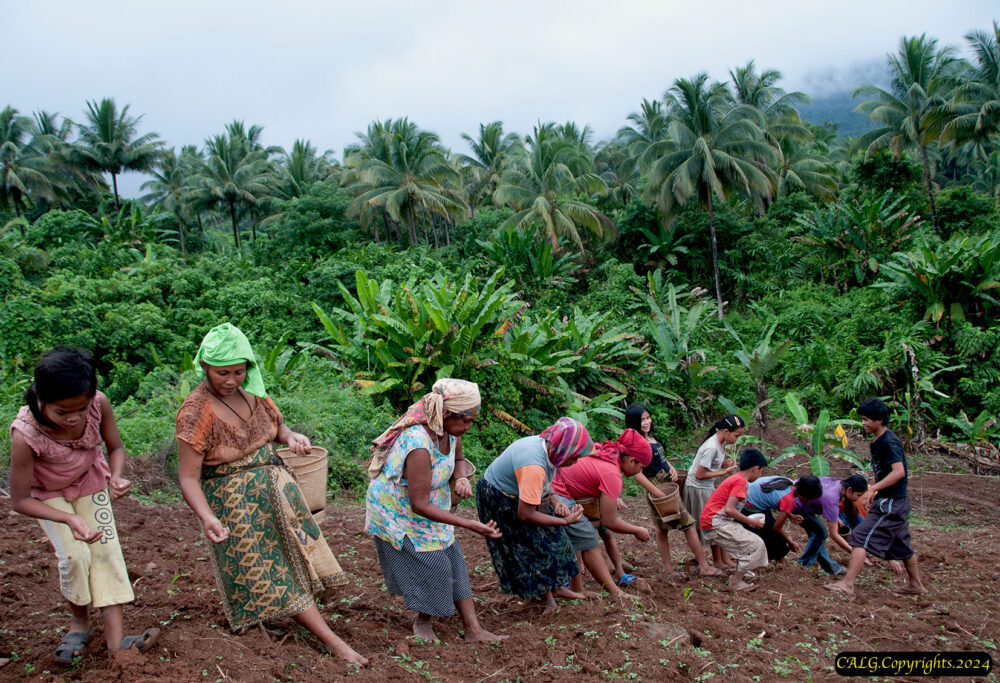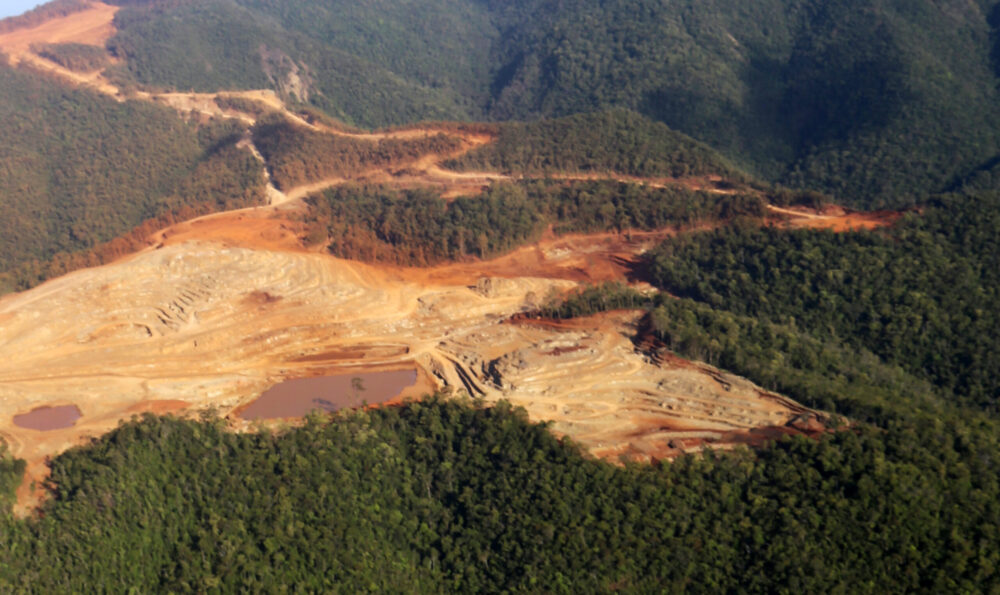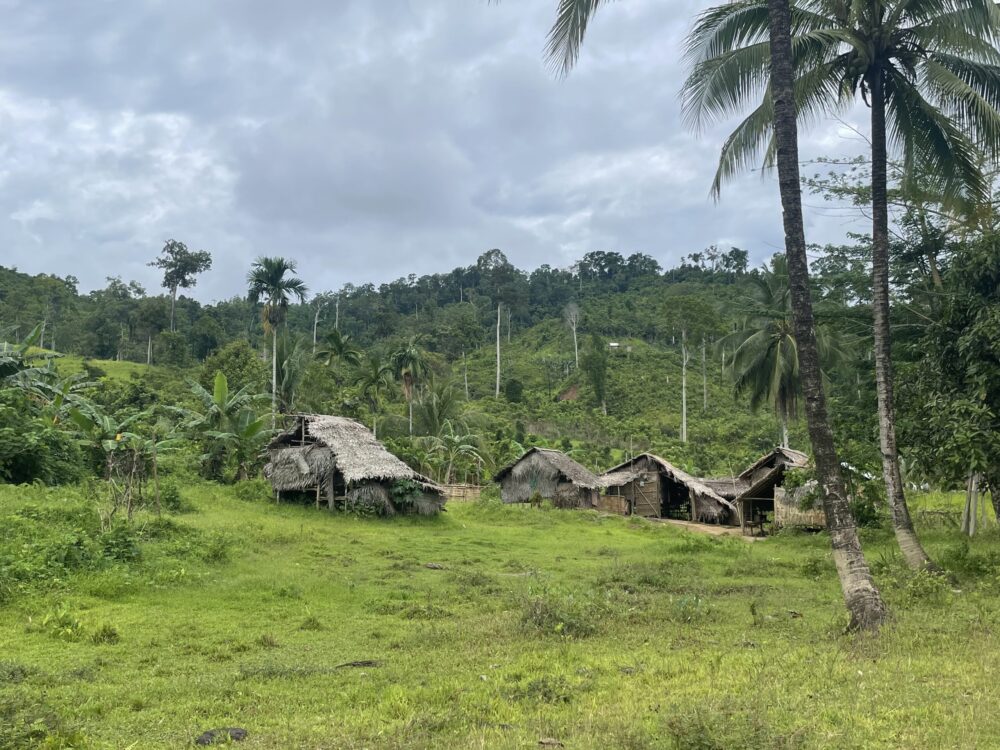As the world transitions away from fossil fuels, patterns of resource extraction and violence are intensifying globally amid skyrocketing demand for the “critical minerals”—including cobalt, lithium, manganese and copper—essential to renewable energy technologies. In particular, the electric vehicle (EV) market is generating unprecedented demand for nickel, valued for extending driving range. By 2030, global demand for nickel is projected to triple.
The Philippines is positioned to capitalise on this surge. As the world’s top exporter of nickel ore and the second largest producer after Indonesia, it supplies a substantial share of the global market. Together, the two countries account for 60% of global supply. China, the largest EV market globally, is the Philippines’ biggest buyer, importing over US$1 billion worth of nickel to China in 2023 alone.
Under President Ferdinand “Bongbong” Marcos Jr., the Philippines is doubling down on mining as a pillar of its “transition economy”. Earlier this year, Marcos announced plans to reform the Philippine Mining Act to fast-track permits and attract foreign investment. The stakes are high: the country holds an estimated $1 trillion worth of copper, gold, nickel, zinc and silver reserves, only 3% per cent of which is currently under mining contracts.
Extracting rare earth elements instead of fossil fuels does little to temper uneven geographies of extraction worldwide. In the Philippines, the violence of mining for “decarbonisation” falls heavily on the country’s rural Indigenous and local communities. Around 60% of mineral deposits and nearly half of mining projects are located on Indigenous peoples’ territories, parts of which have been legally recognised through Certificates of Ancestral Domain Claims and Titles (CADCs/Ts), as provided by the Indigenous Peoples’ Rights Act (Republic Act No. 8371).
New research by Global Witness and the Kalikasan People’s Environment Network reveals that over the past three decades, a fifth of all ancestral domain claims—both approved and under review by the state—have been affected by mining projects. This represents a loss of de facto Indigenous territory equivalent to the size of East Timor. Those who defend their lands against mining face deadly consequences. Since 2012 the Philippines has consistently ranked as the most dangerous country in Asia for environmental and human rights defenders, with mining linked to a third of all killings of such individuals documented by Global Witness.

President Marcos leads a discussion on “revitalising” the critical minerals industry in the Philippines at Malacañan Palace, June 2024. (Photo: Radio Television Malacañang – RTVM on Facebook)
Palawan: The Philippines’ “last ecological frontier”
Palawan, an island province in the southwest Philippines, has long been a site of struggle between Indigenous communities and extractive industries. Declared a UNESCO Biosphere Reserve in 1990, it is globally renowned for its biodiversity and “pristine” natural beauty.
It is also the site of an intensifying critical minerals industry, posing direct threats to the island environment and its people. After former president Rodrigo Duterte’s administration lifted a nine-year nationwide ban on new mining permits in 2021, mining operations expanded rapidly—including within protected areas and ancestral domain claims. Companies have repeatedly violated environmental laws and Free, Prior and Informed Consent (FPIC) protocols to access mineral-rich lands, much of which are legally protected.
The impacts in Palawan are stark. Mining scars the landscape and drives profound social, economic, and ecological consequences: deforestation of old growth, laterite siltation into lowland rice fields and the destruction of reef fish habitat. Ancestral forests are shrinking, along with the diverse livelihoods of Indigenous and other local communities. Hunting, swidden agriculture, and harvesting for non-timber forest products such as almaciga resin are all in decline. Amid expanding mining operations, the highland Indigenous Pala’wan express frustration over flawed or non-existent consultation processes—despite national laws meant to protect their ancestral rights and ensure their representation in policymaking.
Yet Pala’wan do not always share common views on how to respond to mining and other forms of extractive development. Personal aspirations and beliefs often diverge between highland Pala’wan, who invest heavily in customary lifeways, and the lowland Pala’wan, who are more affected by market forces and the political influence of mining corporations. These differences shape community responses to mining pressures, fuelling inter- and intra-community tensions between so-called “pro”- and “anti”-mining groups.
In the highlands, Pala’wan society is broadly egalitarian, with decisions made through consensus. There are no “leaders” in the modern sense, only senior legal advisers whose influence over group decisions is limited. Given the challenges of reaching consensus on divisive issues like mining, some Pala’wan communities have concluded that negotiating with mining companies may offer better outcomes. Despite the exploitative and patronising nature of these relationships, some still choose to engage, seeing no viable alternative.
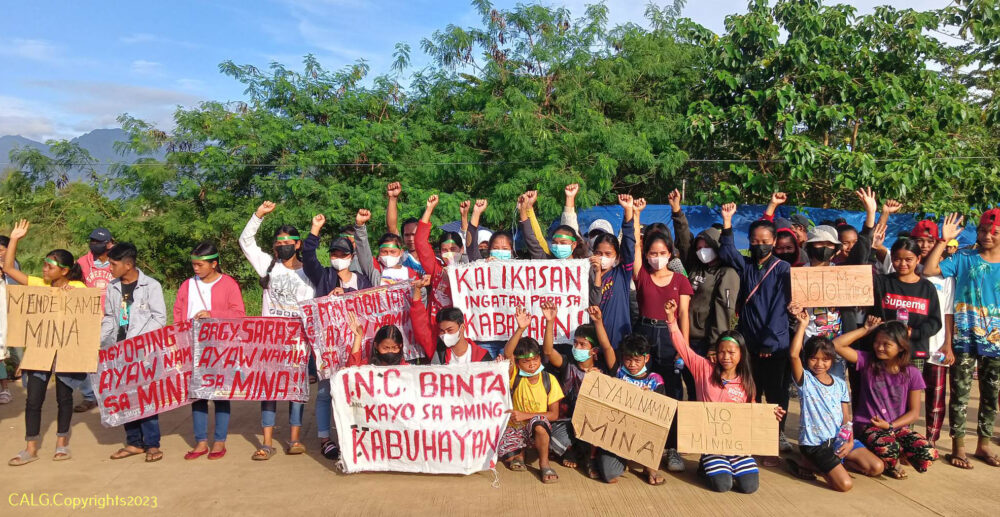
Indigenous youth demonstrating against mining in Brooke’s Point (Photo: Coalition Against Land Grabbing)
The 2025 moratorium: a mixed blessing
On 13 March 2025, civil society organisations and the provincial government made history by declaring a 50-year moratorium on new mining operations in Palawan. The landmark ordinance was the result of several years of sustained advocacy by Palawan-based civil society groups and Indigenous people’s organisations. Their efforts included street protests, negotiations with the provincial board, and a church-backed petition that garnered over 60,000 international signatures online and additional 40,000 signatures on the ground.
The mining moratorium immediately cancels 67 pending mining applications, halting plans to mine over 200,000 hectares across Palawan. However, the ban exempts existing Mineral Production Sharing Agreements (MPSAs) signed between mining companies and the central government, allowing eleven mining firms—already encroaching on Indigenous ancestral lands, old growth forests, and watersheds—to continue extracting and even renew their contracts. At stake are the land rights, livelihoods and cultures of highland Indigenous peoples—and, for some, their very survival—alongside the conservation of the island’s remaining forests and biodiversity.
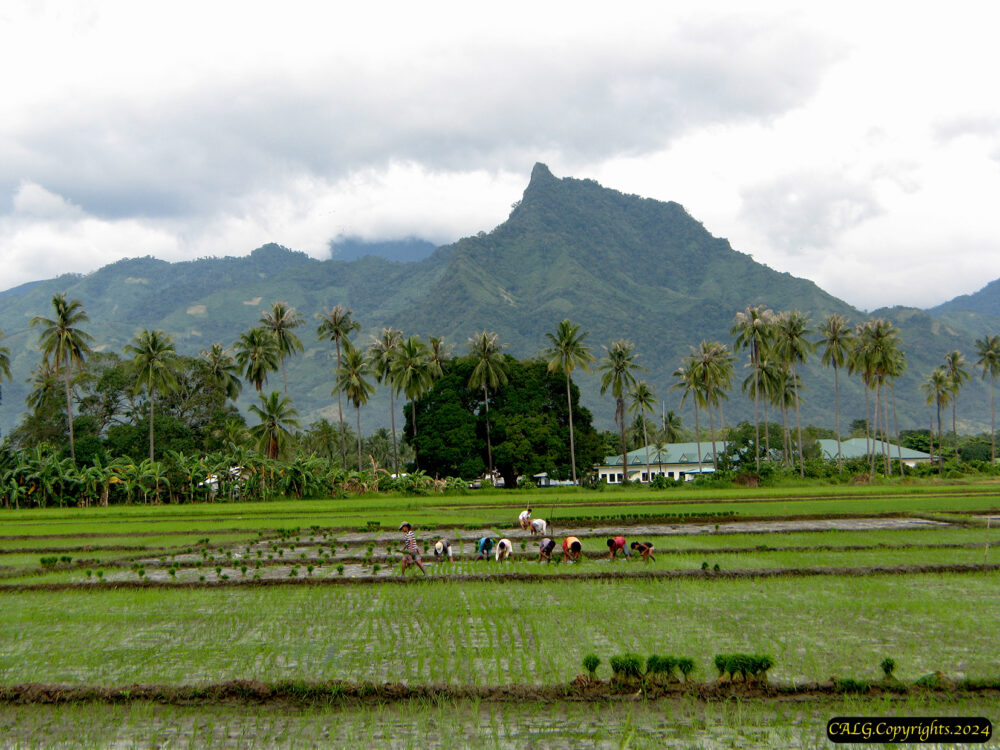
Highly productive paddy fields in Brooke’s Point municipality face the risk of becoming silted if mining operations are allowed to continue (Photo: Coalition Against Land Grabbing)
In response, the international community has rallied in defence of Palawan’s mountains, forests, and peoples. Environmental NGOs and Indigenous peoples’ advocates worldwide have signed an open letter demanding an immediate end to mining in the province.
Four mining companies—MacroAsia Mining Corporation, Lebach Mining Corporation, Ipilan Nickel Corporation (INC), and Rio Tuba Nickel Mining Corporation (RTNMC)—aim to extract minerals from some of Palawan’s most ecologically intact forest zones, including the Mt Mantalingahan Protected Landscape and Mount Bulanjao range. These areas are legally protected under the Philippines’ Indigenous Peoples’ Rights Act and its Strategic Environmental Plan for Palawan, and should never have been opened to mining. If extraction continues, these companies could destroy these irreplaceable ancestral lands and forest landscapes within a decade.
The stakes are immense. Mt Mantalingahan, a protected landscape since 2009, is a global biodiversity hotspot that is home to endangered species found nowhere else on the planet. It is one of only ten Alliance for Zero Extinction sites in the Philippines and one of eleven key bird areas in Palawan. Its forests, some of the oldest in the southern hemisphere, sustain life for 200,000 people by providing clean water and irrigation. A 2008 study by Conservation International valued these ecosystem services at around US$5.5 billion.
The mining proposals threaten more than just the environment. They overlap directly with Indigenous land claims. Nine Pala’wan communities, holding Certificates of Ancestral Domain Claims (CADC), stand to lose ancestral lands and livelihood opportunities for the promise of precarious, low-wage labour in mining. CADCs, issued by the National Commission on Indigenous Peoples (NCIP), recognise Indigenous custodianship over the designated territory and grant communities conditional rights over the land and resources, though state legal imperatives mean that CADCs do not necessarily stop the granting of mining licenses. And, while Indigenous communities are not homogeneous in their responses to extractive development, the ways in which MacroAsia, Lebach, INC and RTNMC obtained mining rights in these areas warrant greater scrutiny.

The Palawan hornbill (Anthracoceros marchei) is only found in Palawan. It is threatened by habitat loss, hunting and trapping for the cage-bird trade (Photo: Coalition Against Land Grabbing)
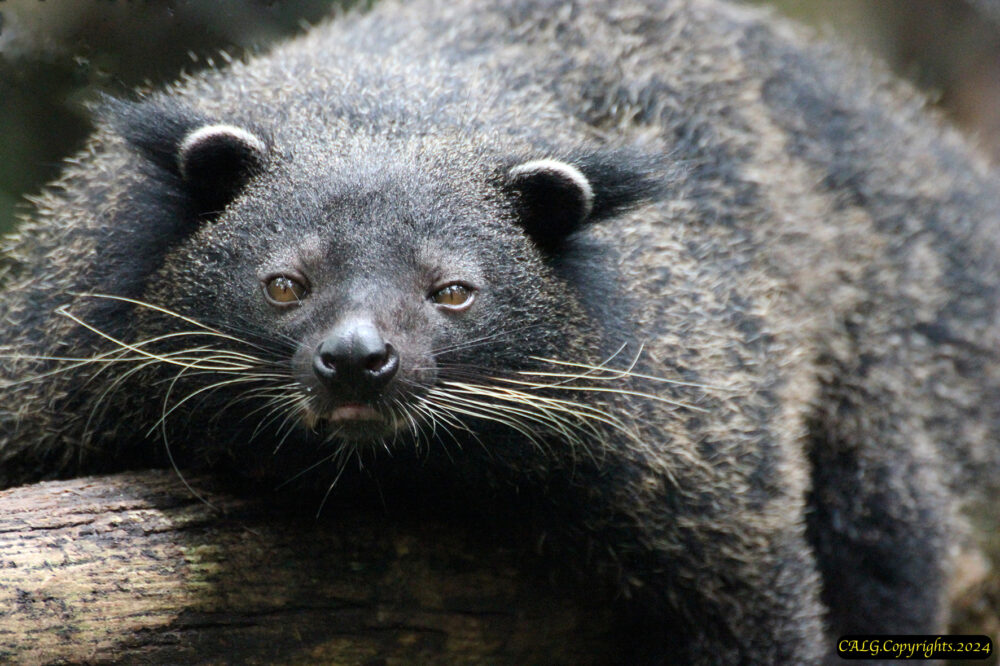
Palawan bearcat (Arctictis binturong whitei). This vulnerable endemic subspecies, is found in both primary and secondary Palawan lowland forests (Photo: Coalition Against Land Grabbing)
Manufacturing consent
In February 2023, MacroAsia Mining Corporation was granted approval to mine within a Mt Mantalingahan ancestral domain claim by the National Commission on Indigenous Peoples (NCIP), the peak body representing Indigenous peoples in the Philippines. The NCIP issued the company a “Certificate of Precondition”, ostensibly validating that the Pala’wan of the local municipality, Brooke’s Point, had given their free, prior, and informed consent to the mining project. The certificate is mandatory before any mining or infrastructure project can proceed on Indigenous lands, typically following a rigorous consultation process with Indigenous communities.
But was this consent given freely? Investigations by Amnesty International uncovered alarming irregularities in the FPIC process. Community members from affected villages reported that mining authorities withheld clear information about the mine’s location and its potential impacts on the local landscape. MacroAsia is alleged by some cited in the Amnesty report to have bribed residents to secure support for its mining proposals: those who accepted the bribes were said to have been included in FPIC meetings, while those who refused were excluded.
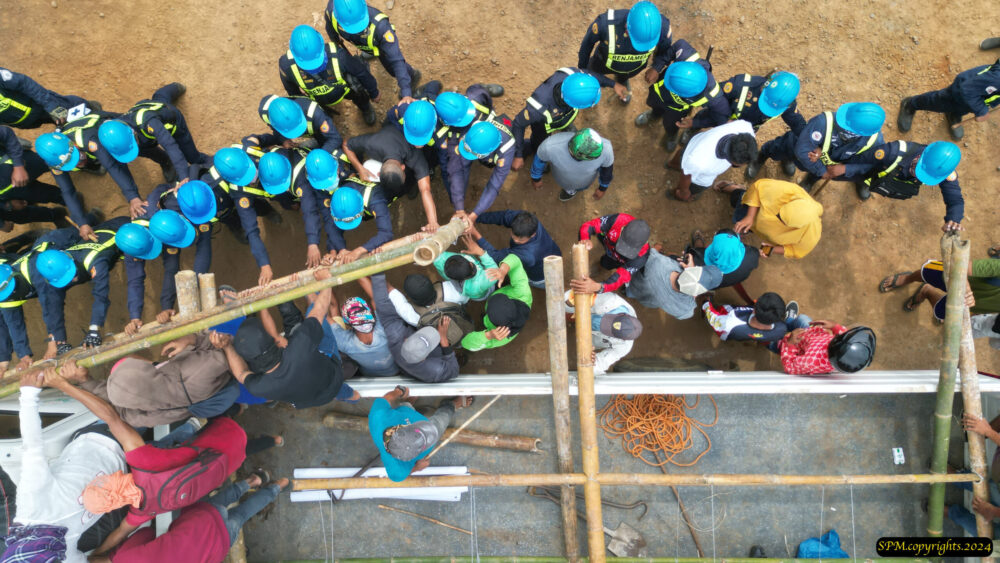
Confrontation between Indigenous protesters and mining guards at the Ipilan Nickel Corp (INC) company’s gate in Maasin, Brooke’s Point (Photo: Save Palawan Movement)
In addition to allegations of manipulating the FPIC process, MacroAsia stands accused of installing “illegitimate” Indigenous leaders to manufacture support for its mining activities. In 2011, Pala’wan community representatives in Brooke’s Point denounced the use of 30 “fake” tribal chieftains, allegedly planted by MacroAsia to endorse the mine. Fifteen of the 30 were reportedly not Indigenous, and the remainder had no ties to the proposed mining area. Despite lacking the required approvals, MacroAsia began exploration within the Brooke’s Point mining tenement in 2009. Indigenous landholders reported that the company entered their territory without permission, felled sacred trees, dug exploration pits, and destroyed rice crops.
MacroAsia’s violations are not isolated. In 2017, Ipilan Nickel Corporation (INC) also began clearing old-growth forests in the Mt Mantalingahan Protected Landscape for a commercial nickel mine without securing a Certificate of Precondition. When Brooke’s Point Mayor Mary Jean Feliciano intervened, shutting down the company’s operations and facilities, the Philippine Ombudsman later overturned her actions, ruling in favour of INC. Mining resumed in 2022, with INC obtaining a Certificate of Precondition. Many community members allege that this Certificate, too, was secured through bribery and manipulation.
Failures of the Indigenous People’s Rights Act
Unlike many countries facing similar kinds of mining pressures, such as Indonesia, the Philippines has legal safeguards in place to protect Indigenous rights and the environment against extractive processes. In 1997, it became the first country in Asia to legally recognise Indigenous peoples’ rights through the Indigenous Peoples’ Rights Act (IPRA). The law affirms Indigenous peoples’ right to their ancestral domains, creating pathways to secure land titles based on long-term occupancy, cultural identity and customs, and livelihood activities. Concurrently, the government established the National Commission on Indigenous People (NCIP)—a peak body tasked with ensuring Indigenous representation in policymaking and overseeing the implementation of IPRA.
The plastipelago
Indonesia’s encounter with the “plasticene” has led to a naïve and hasty government effort to rebrand waste as an asset.
In Palawan, inadequate consultation processes expose the limitations of both IPRA and the NCIP in representing Indigenous demands when these conflict with state-backed extractive interests. The state’s failure to enforce IPRA, alongside the progressive weakening of the NCIP, have not only accelerated mining expansion but also enabled the imposition of top-down conservation schemes upon Indigenous lands.
More importantly, the question of who legitimately represents Indigenous communities amid competing interests demands urgent reflection. The NCIP’s creation of so-called “tribal chieftains” and “councils” is part of a broader process of reconstructing Indigenous identities and social organization along hierarchical lines, “tribal” structures largely absent from Pala’wan social relations and customs. This imposition requires communities conform to state-sanctioned notions of indigeneity in order to claim their rights. To obtain a Certificate of Ancestral Domain Title (CADT), for instance, communities must “prove” indigeneity by demonstrating cultural distinctiveness, homogeneity, and continuous occupation of their land since “time immemorial.” Those most adept at “performing” indigeneity in line with the state’s essentialised criteria are most likely to gain recognition.
While the Indigenous Peoples’ Rights Act technically allows ancestral domain claims to be converted into full land titles, the process is slow, prohibitively expensive, and structurally dependent on sustained NGO support. Even communities whose ancestral domain claims have been fully processed and approved often fracture into pro and anti-mining factions under intense, prolonged pressure from mining companies.
Rather than being subject to “Bureaucratic Orientalism”, Indigenous uplanders and their ancestral domains should be recognised in ways that reflect the legal basis and spatial extent of their territorial rights, livelihoods needs, and long-standing practices of conserving biodiversity. The cultural, ecological and territorial foundations of Indigenous existence are being lost to nickel mining in the uplands.
Finally, as is the case throughout the Philippines, the ever-present threats of extralegal coercion and violence also impact the ability of communities and activist allies to fight for grassroots interests. In Palawan, Indigenous and local people’s resistance to extractive encroachment is increasingly met with surveillance, harassment, and vigilante-style killings often enabled by political complicity. Environmental defenders, frequently smallholder farmers allied with local NGOs, are routinely red-tagged as communists and or terrorists by political and economic elites, legitimising violence against them by police and military forces.
Defending lands, defending biocultural diversity
The mining moratorium signed in March 2025 marks a critical victory—but it is only the beginning. Protecting Palawan’s unique landscapes and peoples requires that provincial and national governments address three urgent priorities: declare a total mining ban in Palawan, including cancelling any existing contracts; establish a robust monitoring system to enforce the mining ordinance; and ensure the genuine participation of Indigenous people in municipal decision-making processes.
The plastipelago
Indonesia’s encounter with the “plasticene” has led to a naïve and hasty government effort to rebrand waste as an asset.
In the absence of a credible political class and amid ongoing elite infighting, the prospects for reversing these trends remain slim. Equitable and sustainable development, Indigenous empowerment, and grassroots participation continue to be undermined by the short-term interests of political elites and a widening gap between civil society’s aspirations and state priorities. Rather than propping up extractive industries under the guise of transitioning to a “green economy”, the Philippine state must act on the promises enshrined in the Indigenous Peoples’ Rights Act nearly three decades ago. Only then can the peoples and environments of Palawan be adequately protected, now and for generations to come.
The post Extracting value, losing ground: the critical minerals boom in Palawan appeared first on New Mandala.
This post was originally published on New Mandala.
